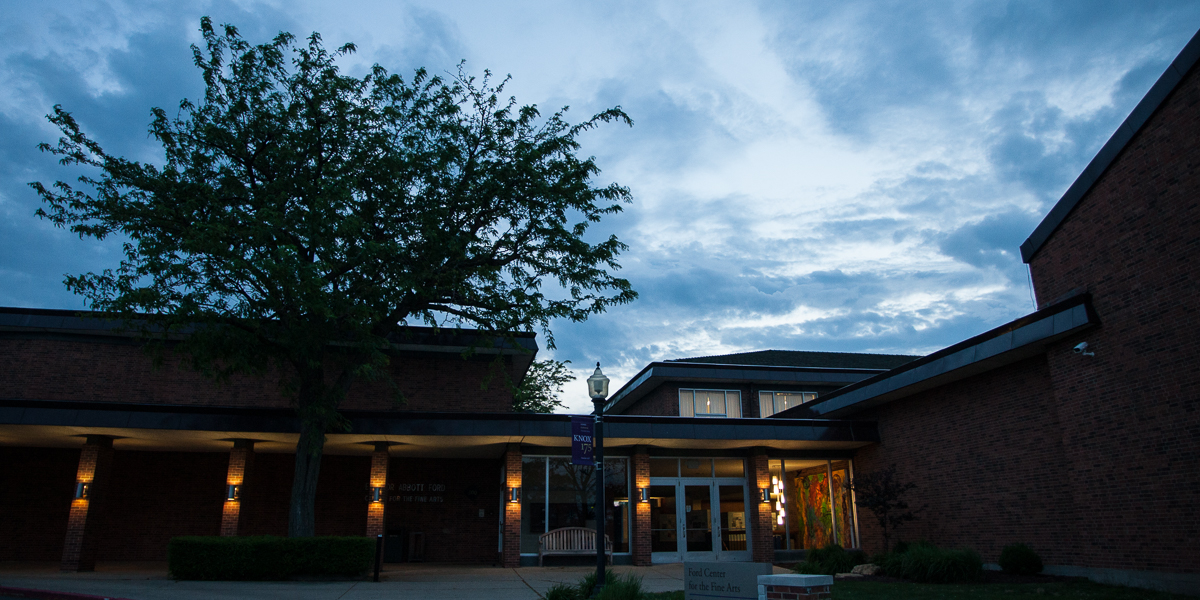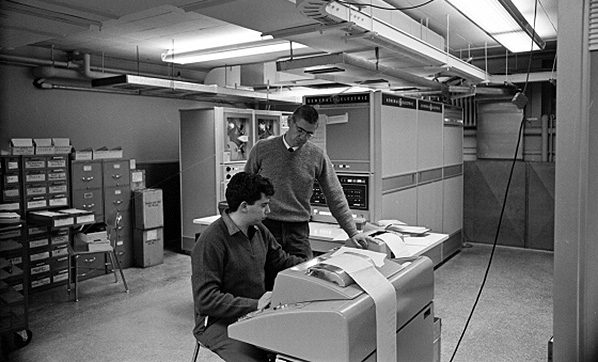Knox Stories
In Memoriam: Thomas Eugene Kurtz ’50
His time at Knox laid the foundation for a lifetime of contributions to education and technology.

Office of Communications
2 East South Street
Galesburg, IL 61401


Even after fifty years in the world's most rapidly changing field, the pioneering achievements of Knox College graduate Tom Kurtz remain at the core of modern digital computing. Kurtz along with colleagues and students at Dartmouth College developed both the first accessible, widely used computer programming language, as well as the process that allows computers to handle multiple tasks simultaneously. Their work is being celebrated this May 1, the 50th anniversary of the date when a computer at Dartmouth ran multiple programs written in BASIC, the language Kurtz helped create.
Prior to the work at Dartmouth, writing and running computer programs was a complex and time-consuming endeavor, often involving travel to another location, instructions written in unintelligible machine code, and long delays to learn whether the program worked. Kurtz told NPR this week that "the whole point was to make computing easy."
TIME magazine chronicles the historic moment in its April 29th Technologizer section:
"...Knowing how to use a computer was virtually synonymous with knowing how to program one. And the thing that made it possible was a programming language called BASIC. Invented by John G. Kemeny and Thomas E. Kurtz of Dartmouth College in Hanover, New Hampshire, BASIC was first successfully used to run programs on the school's General Electric computer system 50 years ago this week-at 4 a.m. on May 1, 1964, to be precise... Kurtz, who had joined Dartmouth's math department in 1956, [also] proposed using a relatively new concept called time-sharing. It would divvy up one system's processing power to serve multiple people at a time... May 1, 1964 at 4 a.m. was actually two historic moments. BASIC programs ran simultaneously, proving both that BASIC worked and that the Dartmouth Time-Sharing System was capable of dealing with more than one user at a time..."
"At 4 a.m. on May 1, 1964... Professor John Kemeny and a student programmer simultaneously typed RUN on neighboring terminals. When they both got back correct answers to their simple programs, time-sharing and BASIC were born. Kemeny, Professor Tom Kurtz, and a number of undergraduate students worked together to revolutionize computing with the introduction of time-sharing and the BASIC programming language. Their innovations made computing accessible to all Dartmouth students and faculty, and soon after, to people across the nation and the world..."
Kurtz was featured in the 2013 Knox Magazine article O Pioneers.
Knox, where Kurtz earned his bachelor's degree in mathematics in 1950, awarded him an honorary degree in 1985. An article in the college's alumni magazine covered his remarks on campus:
Knox had no department of computer science and no academic major in the subject when Thomas E. Kurtz graduated from the College in 1950. But that didn't hinder Kurtz from immediately beginning work in the embryonic field of computer science.
By the early 1960s, Kurtz, John Kemeny and others at Dartmouth College were laying the cornerstones of the computer revolution -- time-sharing, which allows the use of multiple computer terminals, and BASIC, the computer language for the masses.
Kurtz, currently the director of Dartmouth's graduate program in computer and information sciences, rejects the popular view of computer science as "the new vocation." The true vocational subjects, the ones needed to get a job, are writing and speaking, he says; the computer is a tool and a liberal arts education the best preparation for its use.
Speaking at Knox in February 1985, Kurtz endorsed the idea of students gaining a wide educational background, with heavy emphasis on problem solving. Kurtz said the burgeoning popularity of computers in education also could remedy a "lack of quantitative skill" among students entering college.
"The computer could help bring back the ability to reason by steps ... to solve problems by dividing them into smaller units that are easier to solve," he said.
Kurtz lamented the trend in schools toward the teaching of specific programs rather than principles which underlie computer programming.
He also emphasized the place of computer science among the liberal arts. "The ideas behind computer science are among the most beautiful and striking that we have in the liberal arts curriculum," he told an audience of more than 250 people at the College on Feb. 14.
Those concepts include recursion, Kurtz explained, which is the use of a procedure that includes itself, and therefore acts upon itself, to approach the solution through a series of steps.
Recursion, Kurtz notes, is known by scientists and philosophers as induction and is one of the foundations of the scientific method. Solving problems by dividing them into smaller parts is implicit in the very meaning of the word "science."
Recursion and other basic concepts, such as organization and classification, unite computer "science," as advocated by Kurtz, with all the other liberal arts and sciences.
Photo credit: Top, Behind Tom Kurtz '50 (standing) is the mainframe computer used to develop the BASIC computer language; Kurtz, magnetic tape in hand, poses in Dartmouth's computing center in the early days of BASIC. Photos courtesy Dartmouth College/Adrian N. Bouchard
Published on April 30, 2014